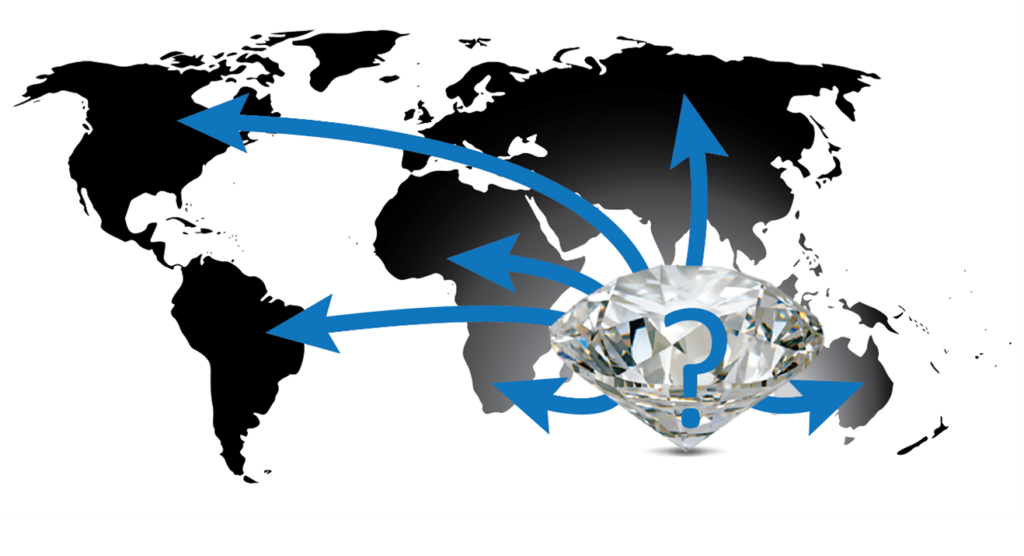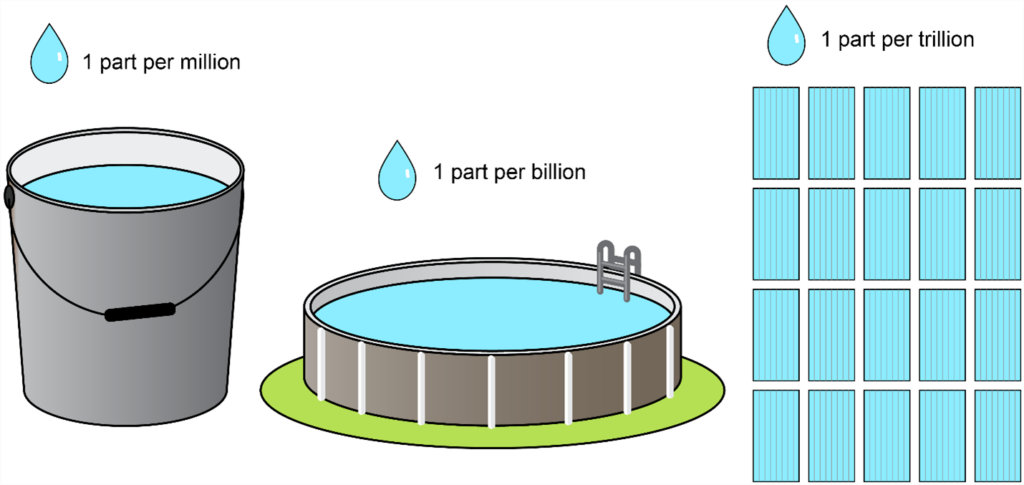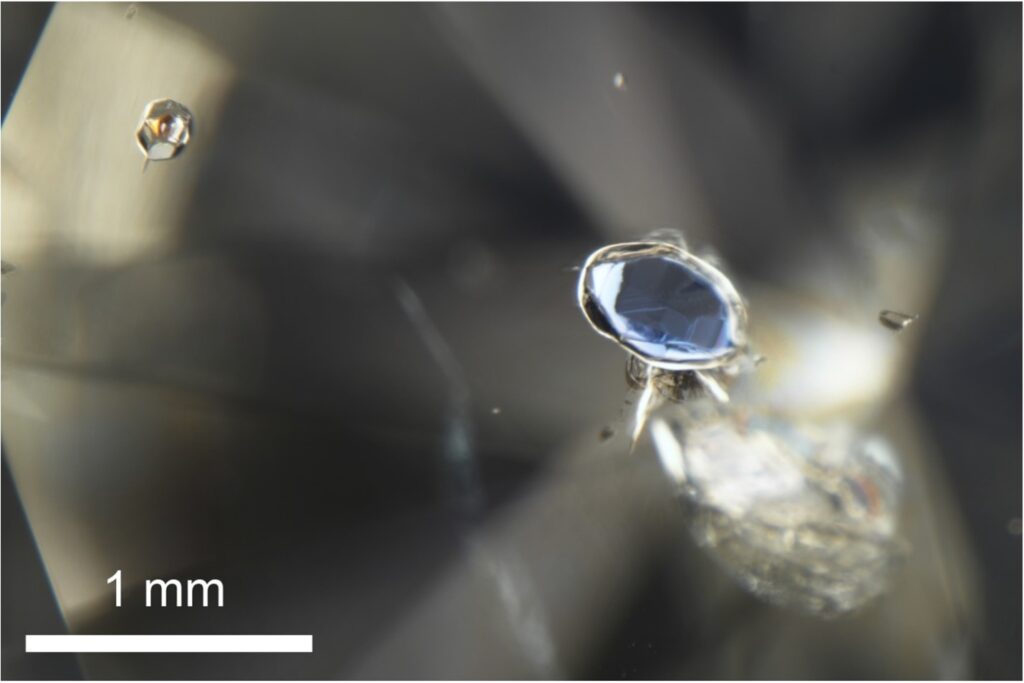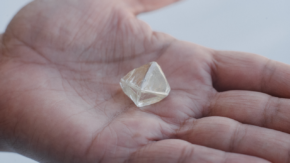Is it possible to analyze a diamond and determine where it was mined? It would be ideal if a quick and non-destructive measurement could reveal the geographic origin of any diamond. In principle, this is feasible for some gemstones, but the prospect is considerably more difficult for diamonds. Here is a brief overview based on a recent article that explored this topic in detail, entitled Methods and Challenges of Establishing the Geographic Origin of Diamonds, published in Gems & Gemology, Fall 2022 (link)1.

It seems reasonable to expect that gems formed in different places should be slightly different. This could mean different types of inclusions, growth patterns, features in spectroscopy, or variations in trace element chemistry (small amounts of impurities, likened to a “chemical fingerprint”). Trace element analysis can be a powerful tool for determining where a gemstone, such as a ruby or a sapphire, comes from2. The concentrations of many trace elements in gems such as rubies, sapphires, and emeralds exceed one part per million (ppm) by weight, often reaching tens to hundreds of ppm. We can imagine a concentration of 1 ppm as a drop in a bucket (Figure 1). It may not sound like much, but concentrations in this range can be measured easily with modern techniques used in gem labs worldwide. The two most used techniques are LA-ICP-MS (laser ablation inductively coupled plasma mass spectrometry) and LIBS (laser induced breakdown spectroscopy).
In diamonds, however, the concentrations of most trace elements are far lower and consequently more challenging to measure. A key reason for this relative purity is that a diamond is made up of closely-packed and strongly-bonded carbon atoms that tend to exclude other elements as the crystal grows. Trace element concentrations can fall in the range of parts per billion (a single drop in an above-ground swimming pool) or parts per trillion (a drop spread across 20 Olympic size pools) (Figure 1).
With more specialized techniques, it is possible to measure the ultra-low trace element concentrations in diamond. The most promising technique is a modified “offline” version3 of LA-ICP-MS. However, this technique is slow, expensive and damaging, with single analyses taking days, costing thousands of dollars, and sometimes requiring destruction of millimeters of the diamond surface. Normal LIBS and LA-ICP-MS analyses take seconds to minutes, with costs from dollars to cents, and the analyses are so small that they are barely visible to the unaided eye. Because of these limitations, fewer than 100 high-quality trace element analyses of gem diamonds have been made to date. The results are complex but show striking similarities and overlap between diamonds from different deposits4. It is not an encouraging sign for the prospect of origin determination.
The analytical challenge of measuring trace elements in diamond is certainly a major barrier in the pursuit of diamond origin determination, but it is not the final hurdle. Even if future technological improvements were to make the analysis simpler and cheaper, the way in which diamonds form within the earth presents a challenge as well. The geological processes and ingredients involved in diamond formation are remarkably similar around the world. Of course, there are unusual and exceptional diamonds that appear to be associated with individual mines. Moreover, if given the opportunity to examine and compare large parcels from different mines, their average properties may differ. But on an individual basis and in general, the majority of diamonds share similar geological characteristics regardless of origin.
Most mined diamonds originally formed 150-200 km below Earth’s surface, in the oldest and thickest parts of continents, within mantle rocks called peridotite and eclogite5-7. Pieces of these mantle rocks are occasionally captured inside diamonds as they grow (Figure 2). We encounter the same kinds of mineral inclusions at most diamond deposits worldwide, reflecting similar diamond growth in peridotite and eclogite rocks. Given what we know about how similar the geology of diamonds can be from one mine to the next, it comes as no surprise to geologists that we also observe similarities and overlap in trace element chemistry.
While the earth’s mantle is quite similar around the world, the rocks close to the earth’s surface, in the continental crust, show huge variations. Colored gemstones, such as rubies and emeralds, form in the crust under more variable geological conditions. The chances are greater that the conditions of colored gemstone formation will exhibit clear and systematic differences between different deposits. Adding the fact that these minerals can typically accommodate much higher concentrations of trace elements than diamonds, the result is that colored gemstones are more likely (though not guaranteed) to inherit trace elements, inclusions, and other characteristics with geographic distinctions.
Consider for a moment three basic requirements that must be met for geographic origin determination to be possible:
- First, we need to have characteristics that are distinct between different origins. Trace element analysis is regarded as the most promising for diamonds, but existing data suggest this first requirement might not be met. Ultimately, it is difficult to conclude whether or not this requirement can be met without first collecting many thousands of measurements from diamonds of known origin and applying advanced statistical methods.
- Second, as mentioned above, we need to have a large database of characteristics for comparison, both to demonstrate that the first requirement is met and to use as the basis to evaluate unknown specimens. Currently, measuring the ultra-low concentrations of trace elements in diamond needs specialized analytical techniques that are simply too slow, too expensive, and too destructive to allow researchers to easily build up a large database. Assembling a representative diamond collection from each mine presents another obstacle, as it would likely need to incorporate thousands of specimens from each locality to faithfully capture the natural variability.
- Third, it must be feasible to measure those discriminating characteristics routinely and commercially in order for it to become a viable service offered by gemological laboratories. Even if trace element analysis met the first two requirements and technically enabled origin determination, the current high-tech methods for making this measurement would not be feasible to offer as a routine service.
Attempting to fulfill the three requirements outlined above would demand a combination of technological innovation and substantial data collection, without a guarantee of success. This would be a monumental research undertaking that few organizations or groups have the expertise and resources to tackle, especially considering that diamond origin determination might be inherently limited by geological factors.
In summary, there has been no scientifically robust study by any method demonstrating unique and measurable characteristics that would allow for independent provenance determination of a random individual diamond1,7-9. Unfortunately, the ideal goal of determining origin independently through a lab analysis is not on the horizon. For now and the foreseeable future, the only definitive method to establish diamond origin depends on retaining country-of-origin and/or mine-of-origin information from the time of mining.
Figures:


References cited
1 Smith, E. M., Smit, K. V. & Shirey, S. B. Methods and Challenges of Establishing the Geographic Origin of Diamonds. Gems & Gemology 58, 270-288, doi:10.5741/gems.58.3.270 (2022).
2 Groat, L. A. et al. A review of analytical methods used in geographic origin determination of gemstones. Gems & Gemology 55, doi:10.5741/GEMS.55.4.512 (2019).
3 McNeill, J. C. R. et al. Quantitative analysis of trace element concentrations in some gem-quality diamonds. Journal of Physics: Condensed Matter 21, 364207-364220 (2009).
4 Smith, E. M., Krebs, M. Y., Genzel, P.-T. & Brenker, F. E. Raman Identification of Inclusions in Diamond. Reviews in Mineralogy and Geochemistry 88, 451-473, doi:10.2138/rmg.2022.88.08 (2022).
5 Stachel, T., Cartigny, P., Chacko, T. & Pearson, D. G. Carbon and Nitrogen in Mantle-Derived Diamonds. Reviews in Mineralogy and Geochemistry 88, 809-875, doi:10.2138/rmg.2022.88.15 (2022).
6 Stachel, T., Aulbach, S. & Harris, J. W. Mineral Inclusions in Lithospheric Diamonds. Reviews in Mineralogy and Geochemistry 88, 307-391, doi:10.2138/rmg.2022.88.06 (2022).
7 Krebs, M. et al. A common parentage-low abundance trace element data of gem diamonds reveals similar fluids to fibrous diamonds. Lithos 324, 356-370 (2019).
8 Dalpé, C., Hudon, P., Ballantyne, D. J., Williams, D. & Marcotte, D. Trace element analysis of rough diamond by LA‐ICP‐MS: a case of source discrimination? Journal of forensic sciences 55, 1443-1456 (2010).
9 Cartier, L. E., Ali, S. H. & Krzemnicki, M. S. Blockchain, Chain of Custody and Trace Elements: An Overview of Tracking and Traceability Opportunities in the Gem Industry. Journal of Gemmology 36 (2018).
Main image: Rough diamonds. (Shutterstock)



